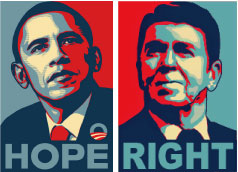The Housing Boom and Bust
I just finished reading Stanford economist Thomas Sowell‘s new book, The Housing Boom and Bust. It’s a really easy read, not too technical, but filled with a lot of good statistics. The thesis of the book can basically be summed up by the following paragraph:
In a complex story about intricate financial arrangements, it is possible to lose sight of a plain and fundamental fact – that behind all the esoteric securities and sophisticated financial dealings are simple, monthly mortgage payments from millions of home buyers across the country. When many of those payments stop coming, no amount of financial expertise in Wall Street or government regulatory intervention from Washington can save the whole investment structure built up on the foundation of those mortgage payments.
The bedrock question then is: Why did so many monthly mortgage payments stop coming? And the bedrock answer is: Because mortgage loans were made to more people whose prospects of repaying them were less than in the past. Nor was this simply a matter of misjudgment by banks and other lenders. The political pressures to meet arbitrary lending quotas, set by officials with the power of economic life and death over banks and over Fannie Mae and Freddie Mac, led to riskier lending practices than in the past.”
I wish Sowell wrote more about the effect of credit default swaps and other complex financial derivatives, but he pretty much dismisses those as “downstream effects”, while the real cause of the crisis was that people were living in homes they couldn’t afford, due to the political pressures on banks and regulators to lend or allow lending to those people, in the name of “affordable housing”.
Sowell also raises an interesting argument that I haven’t heard before. He says that the boom in real estate prices was really a local issue, and that most communities across the country did not see prices rise much more than inflation and incomes. In localities such as coastal California, Miami, Phoenix, Las Vegas, etc. land use restrictions were put in place to limit the land available for building homes. For example, in bubble areas such as San Mateo County in California, more than half of all land is designated as “open space” and cannot be developed. In places like Houston and Dallas, which have no such restrictions and which have seen incomes rise faster than the national average, there was no housing bubble. He argues that such land use restrictions are often put in place by wealthy elites in the name of environmental friendliness, smart planning, or protecting the community from urban sprawl. It has the secondary effect of artificially raising the home values for the people that already live in the community. Furthermore, he argues that these restrictions are unconstitutional, as it allows people to restrict building on land (the “open spaces”) that they do not own.
Sowell also leaves us with this discouraging statement regarding President Obama and his various economic interventions:
Whatever its shortcomings economically, what government job creation programs can do politically is create a large class of people beholden to the government and likely to vote for those who gave them jobs in hard times. The political success of the New Deal is beyond dispute. That FDR could be re-elected in a landslide in 1936 and re-elected again to an unprecedented third term in 1940, despite never having gotten unemployment down into single digits during his first two terms, is a sign that President Obama may also be able to succeed politically, even if his policies turn out to be an economic disaster for the country as a whole.”

June 7, 2009 4 Comments
An Interesting Consequence of Regulation
Milton Friedman once said that regulations favor big businesses and put small businesses at a disadvantage. The theory goes that big businesses can afford the lawyers, accountants, and staff to manage complex regulations, as well as the lobbyists to influence regulators and other government bureaucrats, while small businesses and fledgling companies cannot. It should therefore be the case, that in the most heavily regulated industries, you will see some of the largest and most powerful companies.
Of course, large companies sometimes have advantages in other ways (industries with high startup costs, economies of scale, etc.) And also some might say that the regulations are put in place because the companies became too large. Nevertheless, it’s interesting to look at a list of the largest companies in 2008 (by revenue) in the U.S., and to see what industries they represent:
- Wal-Mart – Retail
- ExxonMobil – Energy/Oil
- Chevron – Energy/Oil
- General Motors – Automobiles
- ConocoPhillips – Energy/Oil
- General Electric – Congolmerate
- Ford Motor – Automobiles
- Citigroup – Banking
- Bank of America – Banking
- AT&T – Telecommunications
So in the top 10 we have companies representing banking, energy/oil, the auto industry, and telecom. Though I haven’t proved anything, I don’t think it’s a coincidence that these are some of the most heavily regulated industries in the country.
Another way of looking at is to look at the age of companies. The idea is that regulations would give the advantage to older, more entrenched corporations. That’s exactly what Brian Gongol has done. His data shows that corporations in countries with heavy regulations tend to be much older. Again, correlation doesn’t imply causation, but the data is interesting nonetheless.
So next time someone suggests that government somehow needs to restrain the size of banks, auto companies, or pharmaceutical companies, so that they don’t become too big (to fail) and powerful, think for a second that the reason those companies are so large may due to government involvement in the first place.
May 20, 2009 No Comments
The Case for Doing Nothing
Harvard economist Jeffrey Miron on how your government effed it all up and how it is continuing to eff it up:
April 30, 2009 No Comments
Reagan Was Right
Ever see the Barack Obama “Hope” poster by the artist Shepard Fairey? I like the “right” one better:

Get it on a t-shirt here: http://thoseshirts.com/rob.html
April 19, 2009 2 Comments
Dambisa Moyo

She was born in Zambia, educated at Harvard and Oxford, and she worked for Goldman Sachs and The World Bank. And now she believes that it’s high time to cut off aid to Africa – within 5 years. I recently listened to Moyo’s appearance on NPR’s On Point with Tom Ashbrook. Her ideas are radical but they make perfect sense to me. Here are some points I picked up from the show:
- Most current aid to Africa is open-ended and without conditions – leads to indefinite dependence on foreign governments
- Only 20% of aid money actually gets to the intended recipients, due to corruption and inefficiencies in distribution.
- African governments are not accountable to Africans, but to non-governmental organizations (NGOs) and foreign governments.
- Total foreign aid since 1960 has reached $1 trillion.
- African governments must provide infrastructure, education, health care – reliance on foreign governments to provide these services will at the same time damage the long-term ability of African governments to do the same.
- Foreign aid has some benefits when it comes to disease treatment (malaria, AIDS/HIV), but it does not produce JOBS, which are the essential component to long-term economic development.
- Foreign aid mostly creates jobs for westerners, but not for Africans.
- Free cash disincentives Afircans to work and produce, and for governments to take responsibility.
- We know what works: India, Chile, Botswana, China, South Africa – these countries did not rely heavily on foreign aid but rather had accountable governments which embraces free market principles.
- No country in the history of the world has achieved long-term economic development by relying on the amount of aid that African countries do.
Also she has a new book coming out, entitled Dead Aid: Why Aid Is Not Working and How There Is a Better Way for Africa.
April 14, 2009 1 Comment